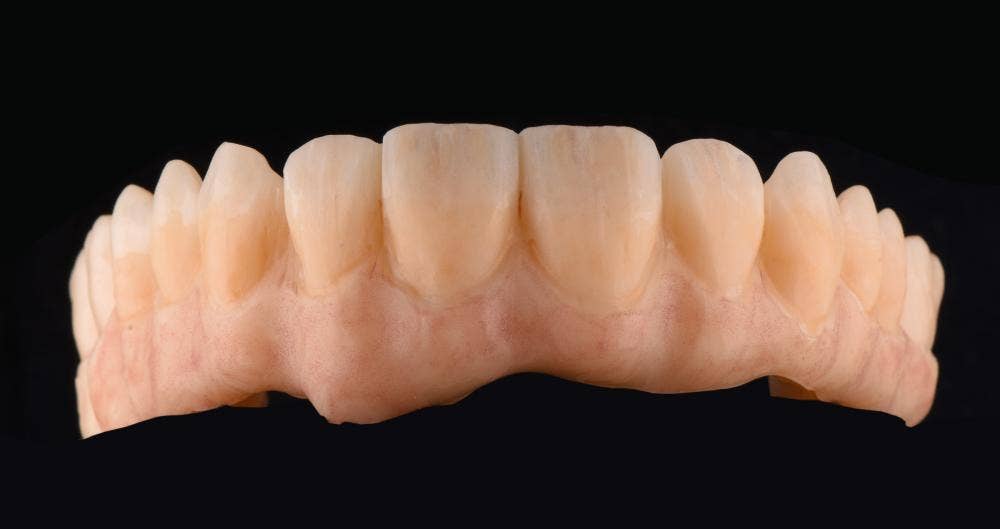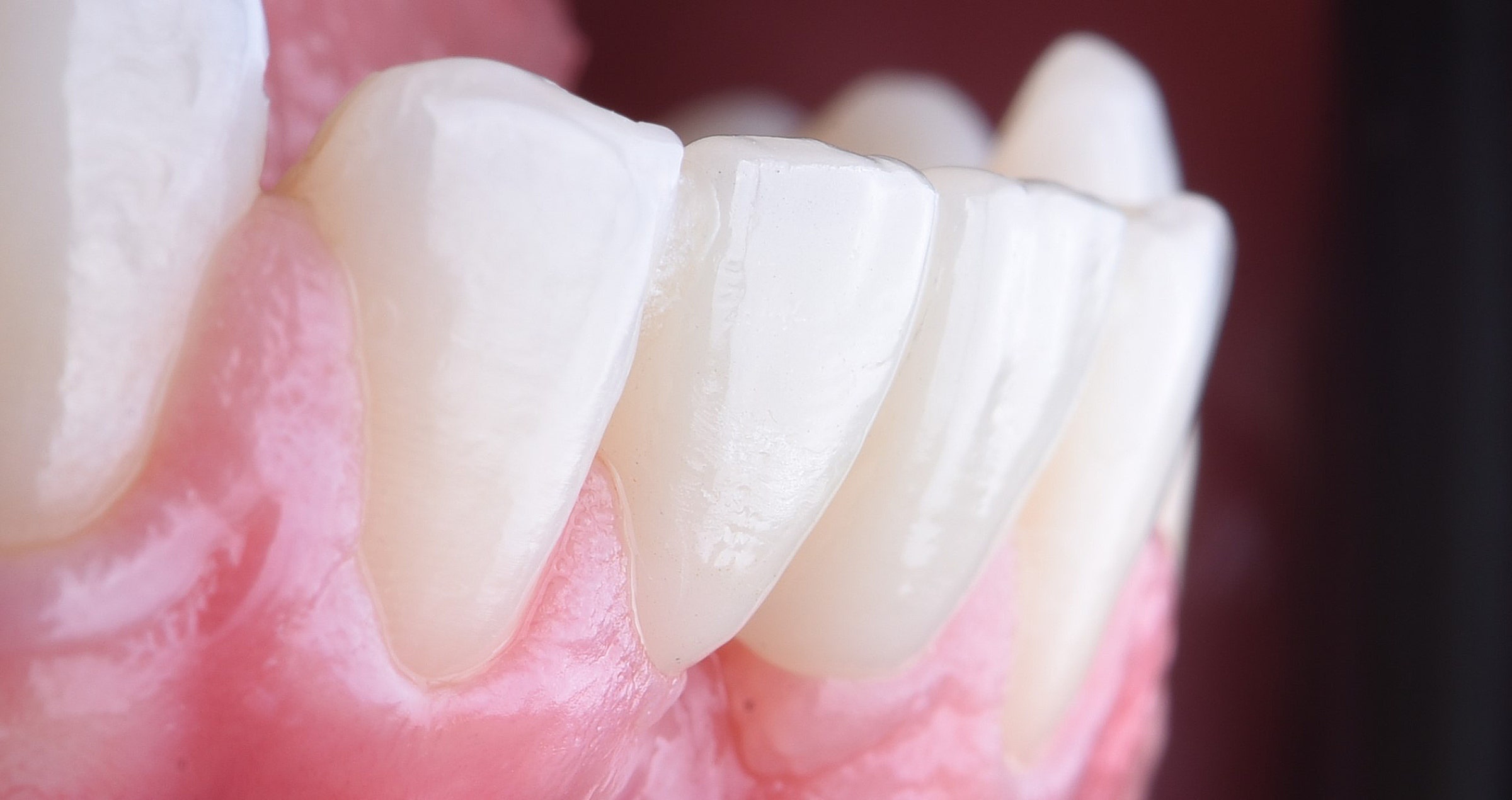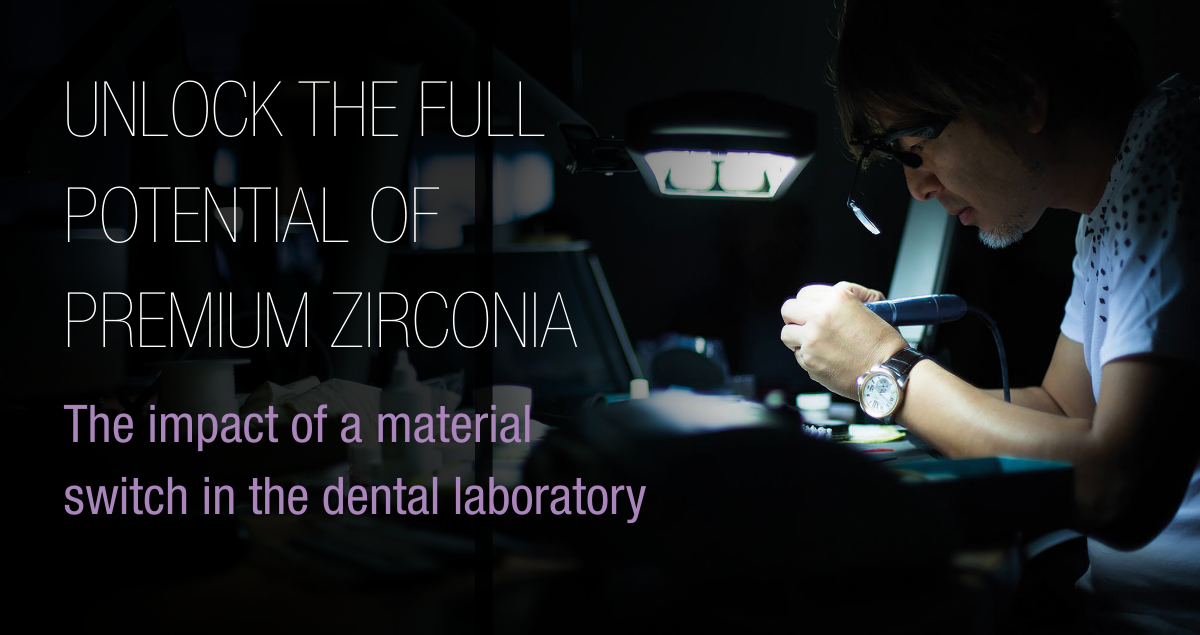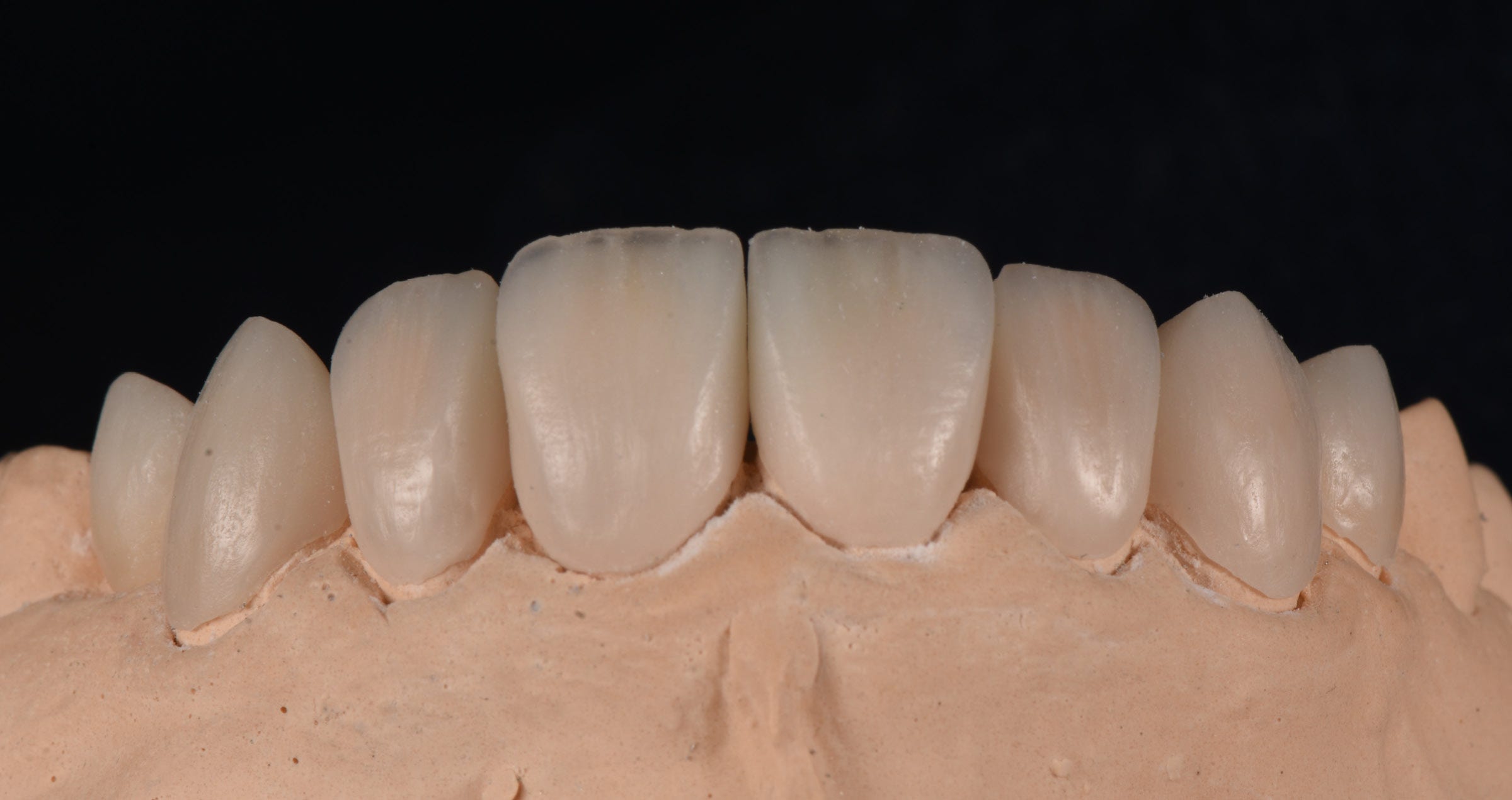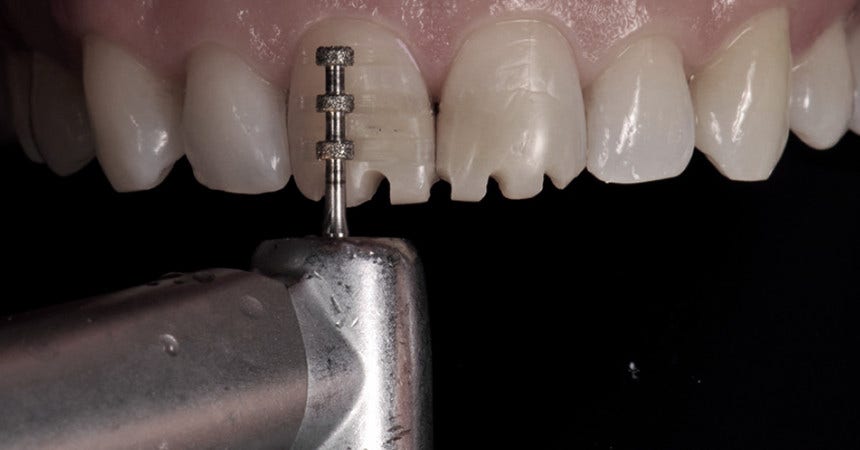
Adhesive cementation of porcelain facings with PANAVIA V5
By Paul de Kok, Amsterdam (KVPA) Periodontic Clinic & ACTA

Picture 1
The Patient
Joris reported to the clinic with two discoloured composite two discoloured class IV composite restorations in tooth 11 and 21 11 and 21 (picture 1). These vital teeth were traumatized in his childhood. He was not satisfied with the aesthetics of the restorations neither with the overall shape and colour of the two teeth. It was therefore decided to make porcelain facings for tooth 11 and 21.

Picture 2
The preparation
In order to limit the sacrifice of healthy tooth tissue while still creating sufficient space for the porcelain, a preparation was chosen with an incisal reduction of 1.5mm and a buccal reduction of 0.5mm. A so-called depth cutter – a diamond drill with 0.5mm deep recesses – was used to achieve this (picture 2).
 Picture 3
Picture 3
To be able to adjust the shape of the mid-line to the new facings, cutting was carried out centrally through the contact. From the distal aspect the contactpoint was remained. The thin shoulder was positioned equi-gingivally, so that a dry operative field could be achieved without damage to the gingiva.
The preparations were then finished using fine drills and polishing discs. The existing, well bonded diamonds composite restorations were left in situ (picture 3).

Picture 4
Since the transparent facings are very thin, the colour of the cut teeth is significant. The colour of the cores was therefore matched using the Natural Die colour guide (picture 4). Finally, impressions were made. Temporary restorations were placed by means of 4 spot etching points and bonding.

Picture 5
Cementation
To combine superior aesthetics with adequate strength, pressed lithium disilicate restorations were chosen for Joris. Prior to cementing the facings, they were tried for size and checked for marginal integrity, contact points, occlusion/articulation and aesthetics. Then the correct cement colour was established by testing the facings with various try-in colours PANAVIATM V5 Universal (A2); Universal (A2) appeared to be the most appropriate colour in Joris’s case. The teeth were then polished with pumice and the facings were cleaned with alcohol, after which the teeth from 14 up to and including 24 were isolate by a rubber dam.
An incisor clamp was placed on the first teeth to be cemented. The facing was tried for fitting once more to ensure that it was free of contact with the rubber dam or the clamp and that the operative field of the preparation was totally dry (picture 5).

Picture 6
The facing was etched with 9% fluoricacid (picture 6) for 20 seconds to achieve micro-mechanical retention.

Picture 7
It was then rinsed with water for 20 seconds before being neutralised in a solution containing ceramic neutralising powder. CLEARFILTM CERAMIC PRIMER PLUS was then applied to the facing. This ensures chemical bonding between the facing and the composite cement thanks to the incorporated silane and MDP. The adjacent teeth were separated by means of a transparent strip, after which the preparation was etched with 35% phosphoric acid (picture 7). TOOTH PRIMERTM was applied after thorough rinsing with water and drying after it had taken effect for 20 seconds.

Picture 8
A thin layer of PANAVIA V5 cement was then applied to the facing. The facing was placed on the preparation with the application of light finger pressure. A microbrush was used to remove the major excess along the margins. The cement of the buccal and palatal aspect was light cured for 5 seconds. A sharp scaler and floss were used to remove the final excess. Glycerine gel was then applied to the outline to avoid oxygen inhibition during curing. The cement was finally light cured from both sides for 20 seconds, the glycerine gel was rinsed away and the margins were finished by means of a composite polishing stone. After placement of the first facing, the rubber dam clamp was moved to the neighbouring tooth so the cementation of the second facing could proceed. This facing was once more tried for fit, pre-treated and cemented in an identical manner (picture 8).

Picture 9
The result
The facings were checked a few weeks later (picture 9). Joris was very satisfied with the aesthetics of his two central incisors. The transitions from tooth to restoration were invisible and the gingiva was healthy.

Picture 10
The transparency, surface structure and gloss are better adjusted to the neighbouring elements and to Joris’s smile (picture 10).
Dentist:

Paul de Kok, Amsterdam Periodontics Clinic
Paul de Kok studied dentistry at the ACTA and is an authorised restorative dentist at the Amsterdam Periodontic Clinic (KvPA), where he treats referred patients with restoration and aesthetic issues. In addition, Paul teaches indirect restorative dentistry at the Oral Functional Anatomy faculty of ACTA as well as conducting research in the Materials Science department. He also delivers lectures about this discipline at both a national and international level.
Dental technician: Eric van der Winden, Oral Design Center Holland
PAUL DE KOK USED CLEARFIL CERAMIC PRIMER PLUS AND PANAVIA V5 FOR HIS CASE STUDY
- 18 sep. 2017



